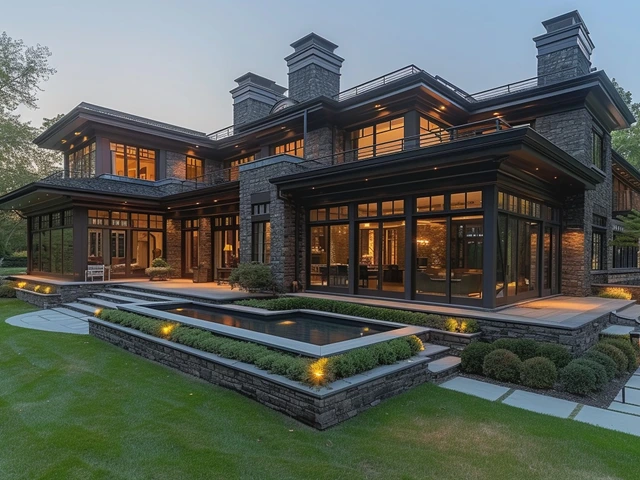A Love Letter to Colonial Architecture
Let's take a quick trip down memory lane. I remember a time when my little ones, Cosmo and Aria, would accompany me on my frequent travel escapades. And Rafferty, our adorable Beagle, would often join us, turning an ordinary road trip to a joy-filled adventure. And let's not forget Rainbow, our chatterbox parrot who'd often steal the show with his lively chirps and chatter. But, there was something that did stand out on those trips. Something timeless and transcending - the magnificence of colonial architecture.
Colonial architecture, for me, is not simply about historical buildings and antique design. It is a tangible echo of the past, an expression of the style and taste of bygone eras. It is a tribute to historical brilliance – etched in stone, wood and brick, bearing witness to the passing of time.
Understanding the Roots of Colonial Architecture
The term ‘colonial architecture’ encompasses a wide variety of architectural styles spread over a prolonged period, from the 1600s up to the early 20th century. We were once colonised by the British and their influence is significantly apparent in the architectural designs that trickled down to us. Colonial architecture is the epitome of historical brilliance, reflecting the mindset, culture, and technologies of the eras they were built in.
Each building carries within its walls a piece of history, a snippet of a story, a chunk of a whole civilisation’s existence. The brick-and-mortar structures aren’t just houses or workplaces, they are keepers of memories and secrets, places where real people lived their lives, celebrated their victories, endured their challenges, and even bore witness to pivotal moments in history.
The Symmetry and Simplicity of Colonial Designs
One defining feature of colonial architecture that often blows me away is their impeccable symmetry and simplicity. These masterpieces typically have a symmetrical façade with a central door, and often two windows one either side of it and five across. They are like a perfect mirror image split right down the middle. This symmetry resonates a sense of balance and order, very much reflective of the societal norms and systems of the time.
You’ll often find grandiose entryways graced by elegant columns and overheads that induce a jaw-droppingly aesthetic appeal. Cosmo, my ever-curious lad, often postulates how they managed to not only construct such beauties in those days without the use of modern tools but also maintain the exactitude of symmetry. And, honestly, it baffles me too!
Iconic Examples of Colonial Architecture
Throughout my trips and wanderings around this wide, wide world, I've encountered some pretty impressive specimens of colonial architecture that still stand sturdy, and continue to inspire awe and admiration amongst design buffs, history enthusiasts and casual onlookers alike.
The first that comes to mind is the ‘White Cliffs Underground House’ in New South Wales, a truly fascinating example of Australian colonial architecture. This building is not just a marvel, it is an engineering and architectural anomaly, crafted almost entirely underground, in response to the extreme temperatures of the outback. It’s stories and structures like these that truly highlight the innovation and adaptability of colonial architects, wouldn't you agree?
St. Patrick’s Cathedral in Melbourne is another classic example of Gothic transition style of architecture, a Victorian-era gem that holds a special place in my heart, residing as it does in my own city. Irrespective of your beliefs or faith, this architectural marvel commands respect and admiration for its intricately chiselled sculptures, soaring spires and stunning stained glass windows. Visiting St. Patrick’s is like stepping back in time. It has the power to make you appreciate the craftsmanship, creativity, and dedication of those builders of yore, even in these high-tech days of ours.
So, here’s a toast to colonial architecture: a standing ovation for the historical brilliance etched into its grand doorways, whispered through its wide corridors and illuminated in its symmetrically placed, sunshine-sipping windows. To see and appreciate colonial architecture is to take a visually stunning walk through the annals of history. And trust me, it’s a walk worth taking!





Leave a Comments